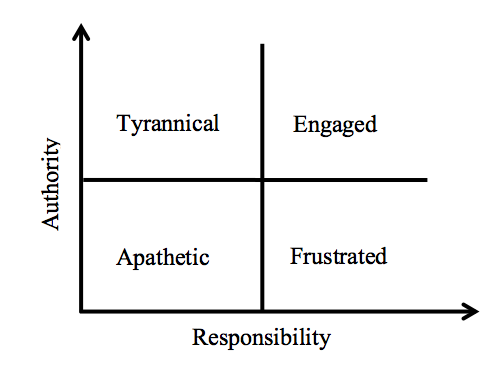If you have a deep reservoir of experience with lean and a desire to help companies reap its benefits, there’s a nearly irresistible temptation to foist your understanding of improvement upon the people working in the organization rather than allowing people to learn and improve in their own way. As John Shook (CEO of the Lean Enterprise Institute) put it:
The notion of experts, often authorized through a certification process, too often devolves into an approach to improvement in which teams of experts swoop in to “do improvement to” the people who are trying to do the work, the frontline value-creating work of the business.
It doesn’t feel that way, of course. It feels like real help. With the best of intentions, you deploy your proprietary conceptual model for improvement that has worked so many times before. You expertly map value streams; identify improvement opportunities; install kanbans for inventory control; create better layouts for manufacturing cells; and set up visual management systems to monitor work processes.
The motives are pure—after all, you’ll get results more quickly, which is good for your customer. But over the long run, individual recidivism and operational regression to the mean is unavoidable. If you doubt that, just try listing the number of organizations that you think have really succeeded with continuous improvement. I bet it’s a pretty short list.
Mark Rosenthal, an outstanding lean consultant in the US, puzzled why so many organizations plateaued in their pursuit of lean. He found that experts,
were essentially pushing them [managers] aside and “fixing” things, then turning the newly “leaned” area over to the supervisors and first line managers who, at most, might have participated in the workshop and helped move things around. So it really should be no surprise that come Monday morning, when the inevitable forces of entropy showed up, that things started to erode.
There were no experts when the Toyota Production System was first being developed. Without years of experience practicing lean, and without a codified system of knowledge, no one was an expert—not even Taiichi Ohno. Workers, supervisors, and managers saw problems and groped their way towards solutions without guidance—because there was no one who actually could provide guidance. The tools that today’s experts eagerly deploy were developed organically by the workers directly affected by those problems in the pursuit of a countermeasure to a specific situation. But they developed those countermeasures by themselves.
I haven’t worked at Toyota—or even at a company that embraced continuous improvement. I haven’t been insulted by Shingijutsu consultants in the course of a five-day kaizen. The only black belt I have is from Men’s Wearhouse, not from a lean six sigma program. I doubt Jim Womack or Dan Jones could pick me out of a police lineup. If I’m honest about it, the depth of my knowledge of the Toyota Production System is like a kid’s wading pool compared to the ocean of wisdom of the deeply experienced lean thinkers in the world. But in some ways, I think this makes me a better consultant when I help companies in their lean journeys.
A few months ago, I was working with a client on a shipping problem. Their biggest customer changed their policies, and instituted a penalty if their weekly orders weren’t received by Wednesday. This was a full day earlier than my client had been able to ship up to that point, so they were facing either a near-certainty of chargebacks, or the need to hire more workers in the warehouse.
What I don’t know about warehouse operations could, well, fill a warehouse—and at that point, I had never done any improvement work in a warehouse. As a result, there was no way for me to “do improvement to” the distribution team, even if I wanted to. What I do know, however, is that in most processes where speed is an issue (as opposed to, for example, quality or safety), the waste of waiting is enormous. And with that level of lean knowledge, I could encourage the the improvement project team to simply walk through the shipping process and look for places where people were waiting for information or materials.
Sure enough, the workers saw the needless handoffs and the unnecessary steps that forced the pickers and packers to wait. They developed the improvements to eliminate those wastes and smooth the flow of products and information through the process. And they’ve continued to modify and improve that process every few weeks, as they come up with new ideas. They’ve cut the time needed to process the shipment from three days to one or one and a half (depending on the order size).
Had my lean experience been deeper, I probably would have taught them process mapping, designed visual controls, and helped them level the workload of the various departments involved. They would have dutifully followed my instructions, but they’d never have owned the improvements. Performance would probably have slipped over time—and without a doubt, they certainly wouldn’t have continued to tweak the system to make it work even better.
If your continuous improvement efforts are stalling, consider whether you’re relying too much on experts who are “doing lean to” people. The fathers of lean didn’t have experts they could rely on, and they did pretty well. Maybe you should try professing ignorance and letting the workers solve the problems.
* * * *
(Note: This article was first published at the Business Transformation & Operational Excellence Insights website: http://bit.ly/2b7omF7)

















Quisque iaculis facilisis lacinia. Mauris euismod pellentesque tellus sit amet mollis.